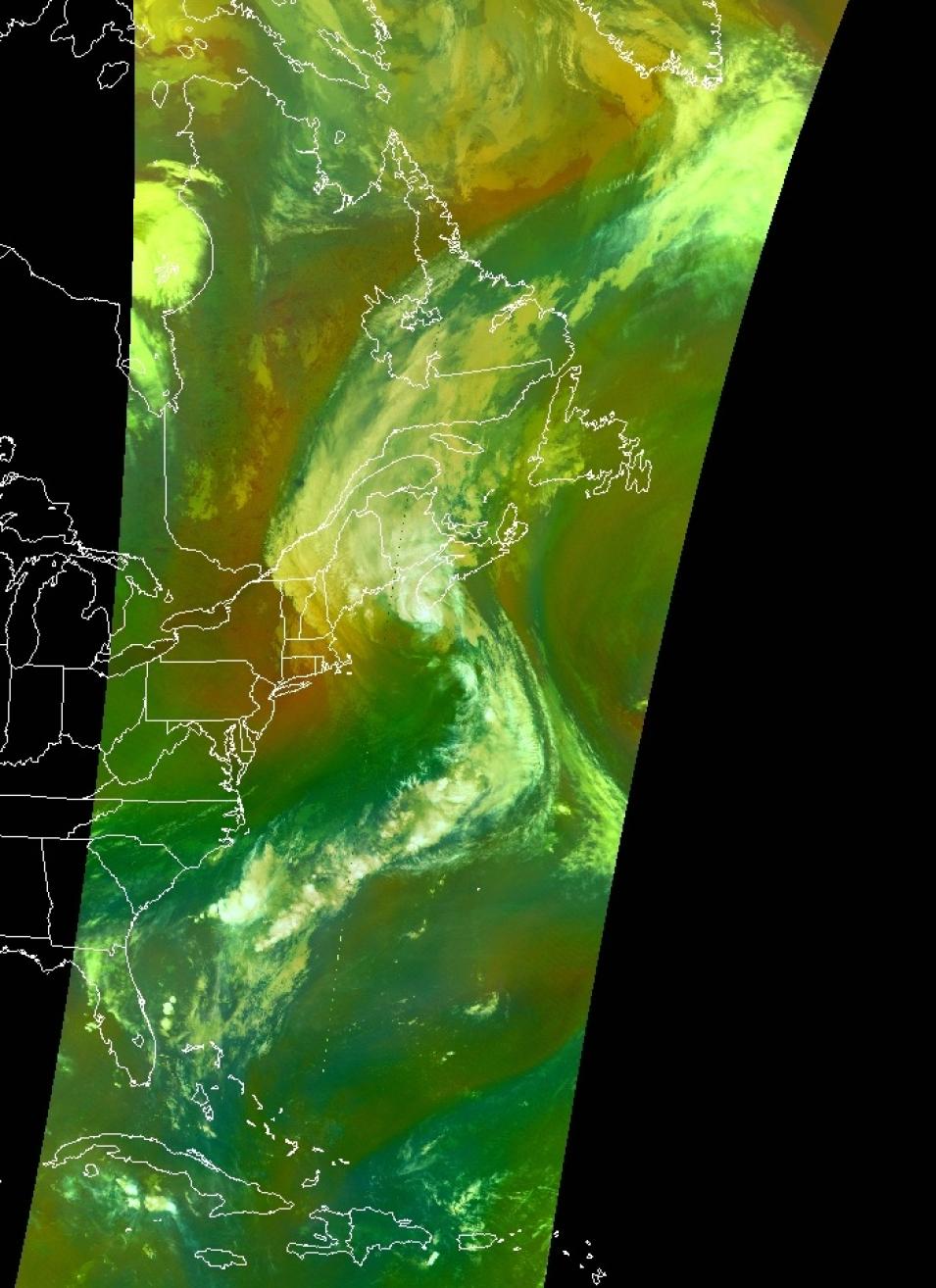Dr. Emily Berndt, Research Scientist, NASA Short-term Prediction Research and Transition Center (SPoRT)
Research interests: Using satellite data to better understand the atmospheric processes leading to strong storms and using this knowledge to develop new forecasting products and new capabilities to display storm data.
Research highlights: A ripple in the atmosphere off the northern coast of Africa on 22 September 2016 caught the attention of the U.S. National Hurricane Center. Using data from Earth observing satellites, aircraft, and ocean buoys, forecasters watched the disturbance churn westward across the Atlantic, absorbing warm, moist air as it slowly intensified. By the time the storm approached Barbados on 28 September, it was packing sustained winds of 39 to 73 mph and had developed a closed circulation. It was now a tropical storm, and given the name Matthew. Tropical Storm Matthew became Hurricane Matthew on 29 September as sustained winds increased to 74 mph. Suddenly, over a 24-hour period, the pressure inside the hurricane dropped rapidly, increasing the storm’s sustained winds from 80 mph to 165 mph. In the span of a day, Matthew became a Category 5 hurricane, the strongest storm possible on the 1-5 Category Saffir-Simpson Hurricane Wind Scale—a rate of intensification that rarely has been observed.
The explosive growth of Hurricane Matthew is one example of cyclogenesis. Cyclogenesis refers to the general development or strengthening of a cyclonic system, such as a hurricane or other area of low pressure. Developing ways to use data from Earth observing satellites to better understand the atmospheric factors behind cyclogenesis and the rapid intensification of storms like Hurricane Matthew is one responsibility of the Short-term Prediction Research and Transition Center (SPoRT). It also is a key element of Dr. Emily Berndt’s research as a member of the SPoRT team.
SPoRT, which is located at NASA’s Marshall Space Flight Center in Huntsville, AL, develops ways for the operational weather community to use satellite observations and research capabilities to improve short-term regional and local weather forecasts, and is jointly-funded by NASA and the National Oceanic and Atmospheric Administration (NOAA). From using data from NASA Earth observing satellites to improve soil moisture models in NASA's Land Information System to providing real-time lightning and storm data, SPoRT work and research encompass a wide range of activities. In her SPoRT research, Berndt relies on data from instruments aboard numerous Earth observing satellites, especially hyperspectral infrared sounders that detect radiated infrared energy.
While humans can detect light in the visible band of the electromagnetic spectrum (human light sensitivity ranges from wavelengths of about 430 nanometers [violet] to about 770 nanometers [red]), hyperspectral infrared sounders detect radiated energy in hundreds to thousands of narrow bands across the infrared portion of the electromagnetic spectrum. One key hyperspectral sounder Berndt relies on is the Atmospheric Infrared Sounder (AIRS) aboard the Aqua satellite. The AIRS instrument by itself is best used in clear conditions, but when paired with the Advanced Microwave Sounding Unit (AMSU-A), which also is aboard Aqua, the combined instruments can be used to detect atmospheric variables in partly cloudy regions. Since clouds are mostly opaque in the infrared part of the electromagnetic spectrum and are largely transparent at microwave frequencies, the infrared + microwave AIRS/AMSU system provides data over a broad range of atmospheric conditions.
In an early research project, Berndt used AIRS/AMSU atmospheric soundings of temperature, moisture, and ozone to investigate rapid cyclogenesis and the development of high-impact winds associated with intense low pressure systems developing in the North Atlantic Ocean. Her research was tied to understanding how AIRS/AMSU data can be used by forecasters at NOAA’s Ocean Prediction Center (OPC) to anticipate and more accurately forecast high winds with these events.
NASA-funded research has shown that changes in atmospheric ozone levels are closely related to changes in storm intensity and the development of high winds that can threaten maritime activity. These ozone changes can be sensed by satellite-borne instruments in near real-time, meaning that ozone observations are available several times a day and can be tracked by forecasters. Building on this research, Berndt and her SPoRT colleagues developed an AIRS/AMSU total column ozone product that OPC forecasters can view using the National Centers for Environmental Prediction (NCEP) Advanced Weather Interactive Processing System (N-AWIPS). The AIRS/AMSU total ozone product evolved into an ozone anomaly product to give forecasters more certainty for identifying areas of ozone-rich air in the stratosphere that can drive rapid cyclogenesis and high wind events.
